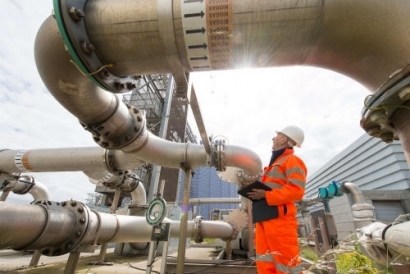
Working in partnership with Scottish Water, Veolia has extended the site’s capability to generate its own energy by boosting the renewable energy derived from a combination of anaerobic digestion of sludge and biogas fired combined heat and power plants.
Veolia has introduced a wide range of measures to derive renewable energy using sludge as a resource. Measures installed to date include a thermal hydrolysis process that has increased biogas production by around 10%, investment in an additional CHP unit to provide greater energy generation and to take advantage of the additional biogas, and a further 3% increase in the yield of biogas.
Seafield WwTW treats waste for a population of approximately 850,000 people from Edinburgh and the surrounding area which equates to 300 million litres of wastewater every day. The target of energy self-sufficiency will go towards increasing sustainability and lowering carbon emissions. The advances to date mean that the Seafield site has reduced its energy costs by 50% which will help meet the value-for-money consumer criteria set for the industry.
Commenting on the continuing development, John Abraham, Chief Operating Officer Water at Veolia said, “Recent estimates indicate that the water industry could be self-sustaining for electricity by harnessing the 11 billion litre annual flow of waste water. Our application of technology to this process demonstrates how we can help deliver greater sustainability for the industry using waste water to energy systems, and also meet water industry carbon reduction targets.”
More advanced technologies now mean that biogas from all the available sewage could deliver an estimated 1,697GWh - enough electricity to power over half a million homes, increasing the resilience of the National Grid and helping to control energy bills.
For more information visit Veolia

